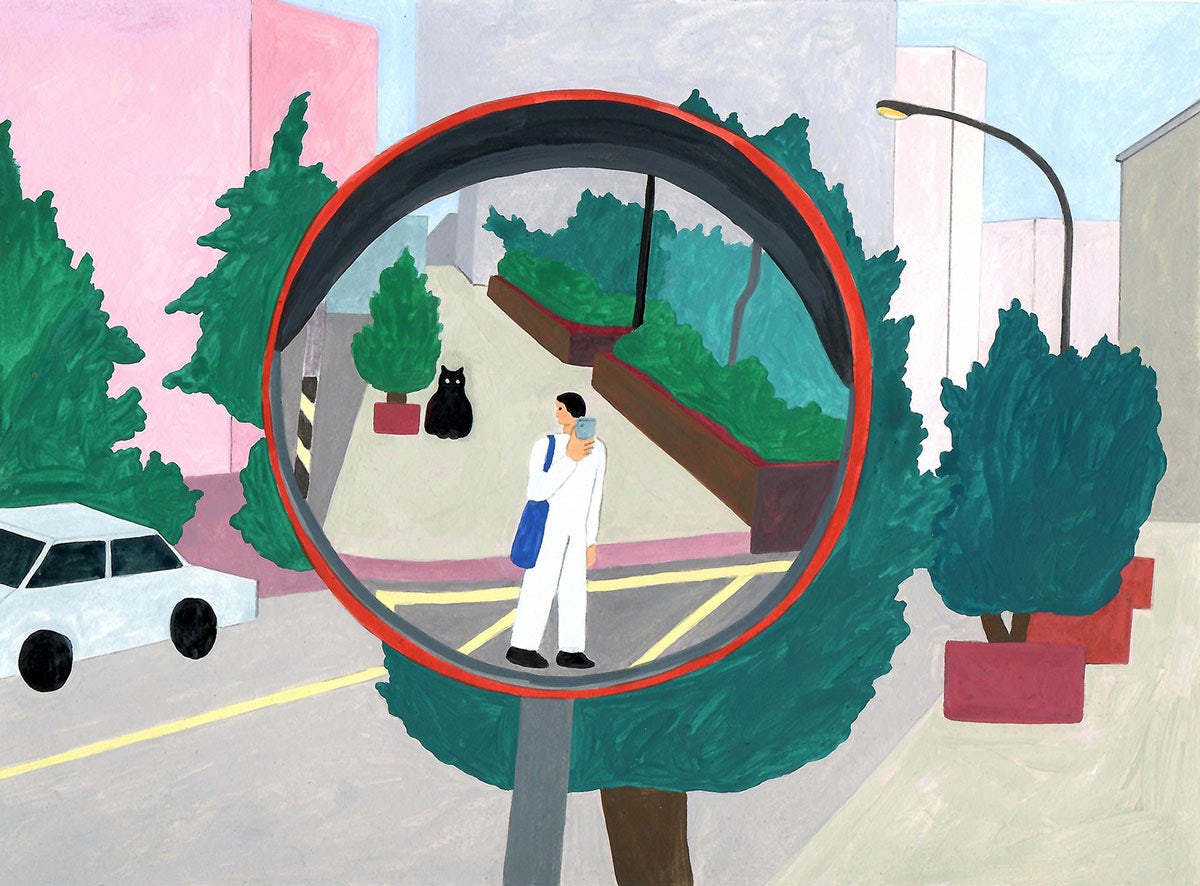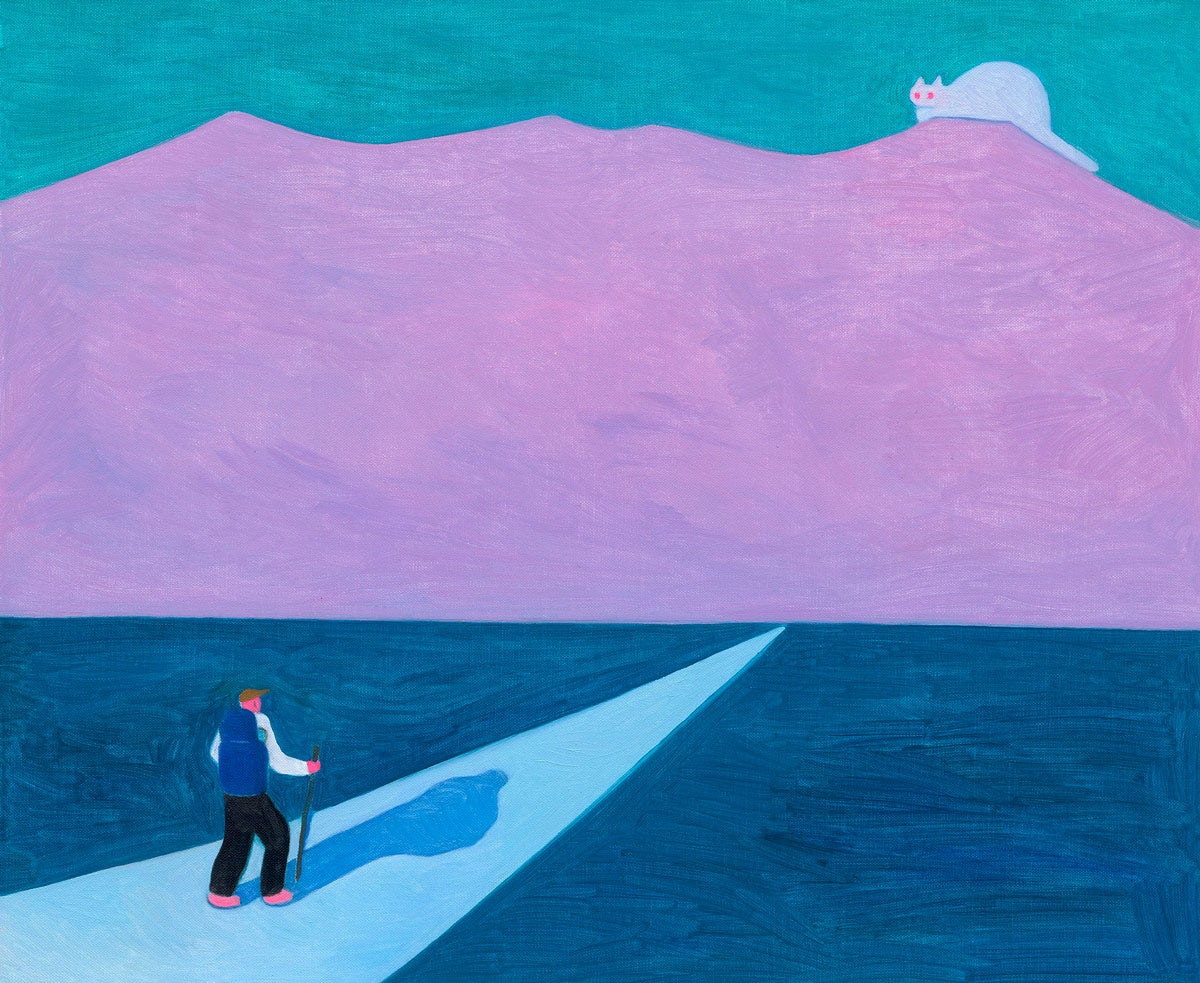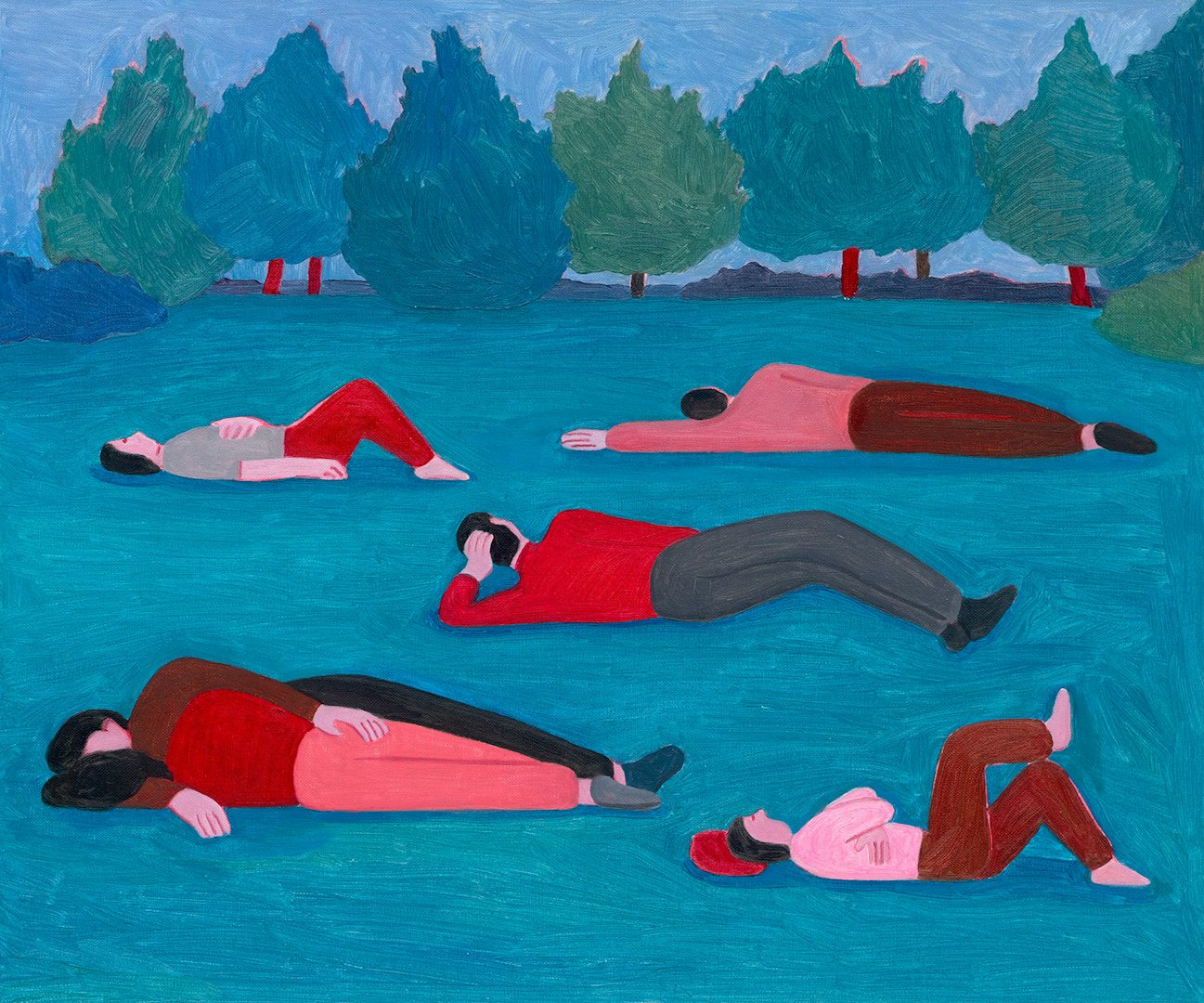Acia Yang’s cerebral illustrated scenes
The painter and illustrator, who is based between Taipei and Brussels, shares how she blends her two worlds in her dreamlike artworks
It took Acia Yang a surprisingly long time to realise that her calling was in illustration rather than design. Growing up in Taiwan, she originally studied fine art in high school before pursuing commercial design at university.
After graduating, she spent several years building up her graphic design practice but gradually it dawned on her that she didn’t feel passionate about the work she was making. “After reexamining my interests, I realised that my favourite thing was still painting,” she tells CR.
Having started experimenting with gouache and oil painting, Yang says, “at first, I didn’t think too much about whether or not I could make a career out of drawing, I just enjoyed the process of creating.” Giving herself the time and space to mess around has been a blessing, allowing her to develop a beautifully simple style that depicts familiar scenes and moments, yet makes them feel as though they’re frozen in time.

“Most of my artworks are less focused on strong narratives and more about creating atmospheric spaces where emotions flow subtly through the composition. I want viewers to pause, absorb the mood, and experience it at their own pace,” she says.
After finally feeling confident enough in her burgeoning practice, she took the plunge and became a full-time illustrator, living and working between her home city of Taipei and Brussels. “Honestly, it wasn’t easy to make a living from illustration in the beginning. But I started to share my work on social media, and gradually I was approached to collaborate with people,” she says.

“Although some of the commissions were not very well paid, to me at the time every collaboration was a great encouragement. Later on, I started working on some illustrations for Belgian magazines and local event visuals, and then I started to take illustration more seriously as a career worth devoting myself to.”
Living in Brussels on and off for the last eight years has made a huge impact on Yang’s work, particularly when combined with her formative years in Taiwan. “The Belgian life and the city have had a great influence on my paintings, resulting in a style that mixes Western compositions and colours with Eastern emotional expressions,” she says.

“I usually like to paint an extremely simple space, sometimes from an abstract landscape of inner mood, or from a real landscape of my life. I also like to take photos of my daily observations with my phone, and the spontaneous moments I capture often become the inspiration for my paintings.”
While she’s spent a long time honing what makes her style unique, one of the biggest things the illustrator’s learned over the course of her career is not to be a perfectionist. “In my commissioned work, I often get so obsessed with perfection that I spend a lot of time on certain colours and details, but I’ve come to accept that there is no such thing as a 100% perfect piece of artwork,” she says.

She’s also made the decision not to focus too much on commercial work and sacrifice her personal practice in the process, noting the symbiotic relationship between the two. “Without creating personal work, I feel more anxious than I would if there were no commissioned projects,” she explains.
“It’s almost as if not creating makes me feel disconnected from myself. For me, painting is a bit like being in love – it’s something that stays in my thoughts constantly. The process of painting also brings me back to a very simple and present state.”

While the creative side of Yang’s practice comes easily now, she acknowledges that building a sustainable career as an illustrator is no mean feat these days. “Becoming an illustrator requires long-term dedication and growth. Beyond creating art, I also need to take a lot of time to handle client emails, invoices, and administrative tasks – small but vital parts of the work.”
“Being an illustrator in the age of digital media tools is really competitive, with millions of creations appearing on the internet every day,” she continues, “but it also means that all styles can be seen and become popular. Social media has become a platform that allows for a lot of opportunities, even at home, to reach out to the rest of the world.”
That’s why, Yang adds, her key piece of advice for anyone entering the industry now is to be utterly obsessed with the work you’re putting out into the world. “Perseverance and staying passionate in creating, and most importantly, creating work that you genuinely love and feel connected to. That sincerity definitely attracts people who like what you create.”





